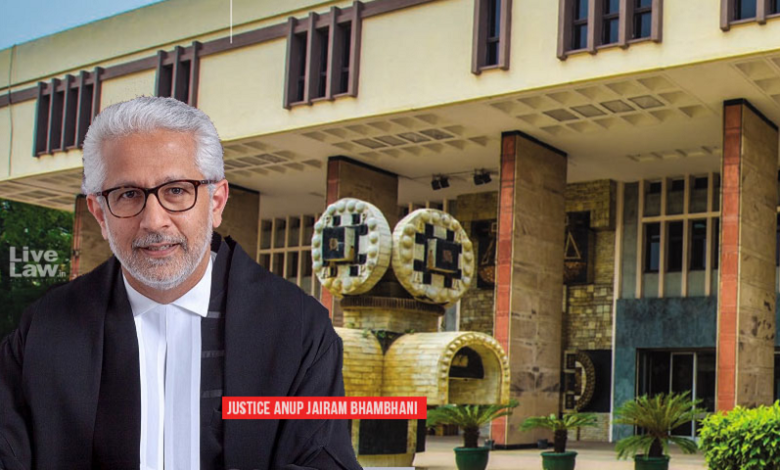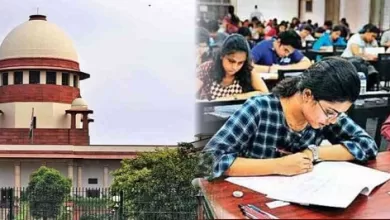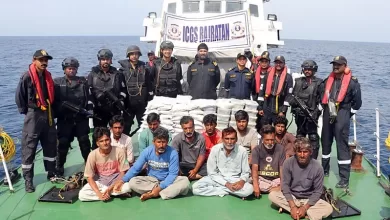As The Victim Offers To Serve As A “Surety” For The Accused In The POCSO Case, The Delhi High Court Grants Him Bail

The victim, the accused’s wife, testified in court that they were in a consensual relationship at the time of the alleged offense and offered to act as surety for him if he were to be granted bail. As a result, the Delhi High Court granted bail to the 20-year-old in the POCSO case.
The violations under Section 376 (2) and Section 6 POCSO Act are said to have been committed when the victim, who is now more than 19 years old, was on the verge of becoming a legal adult, according to Justice Anup Jairam Bhambhani’s decision on the bail application made by the accused.
The victim admitted before the court that she had a child with the petitioner, that she carried the pregnancy to term, and that she gave birth to the kid.
In the order, the court stated that it had extensive conversations with the victim and determined that ‘X’ fully and unreservedly approves and affirms whatever has come to be documented in the course of inquiry and trial, as summarised above.
It is claimed that the petitioner and the victim had been friends since their time in high school. The victim is 19 years, two months, and 17 days old, whereas the petitioner is currently 20 years, 11 months, and 11 days old. According to a deposition taken in April 2022, the victim had previously traveled with the petitioner in 2019 and married him in Haryana’s Ambala region. Additionally, she got an abortion in 2019 at her mother’s request.
The victim’s mother reported her missing on July 25th, 2020. When the petition was filed, the victim was about 17 years old and the petitioner was 18 years old. She was found by the police in a Jhuggi where she had been residing with the petitioner in February 2021. In June 2021, she gave birth to a child.
Charges were brought against the petitioner in October 2021 under Sections 6 POCSO Act and 376(2) IPC. The prosecution is currently compiling its evidence for the trial. Although the victim’s mother testified in favor of the prosecution’s case, the victim herself informed the trial court that she had voluntarily accompanied the petitioner. She currently resides with the petitioner’s parents along with her child.
The petitioner’s attorney requested release based on these circumstances, arguing before the top court that it is a case of juvenile romanticism and that there was no evidence of trickery, compulsion, or pressure. The State countered that because severe crimes are allegedly committed, expanding the accused’s bail will harm the prosecution’s case.
The charge sheet and charges have been submitted, the court said, triggering Section 29 of the POCSO Act, raising the standard of satisfaction needed to grant a release. However, the court cited the ruling in Dharmander Singh @ Saheb vs. The State (Govt. of NCT, Delhi) where the high court had established standards for evaluating such cases after charges were filed in 2020.
In Dharmander Singh @ Saheb in 2020, Justice Bhambhani stated that when deciding a bail plea at the post-charge stage, the court could take into account certain real-life considerations in addition to the nature and quality of the evidence it had at its disposal to tip the scales either against or in favor of the accused. These are the aspects:
- the victim’s age: the more horrific the alleged offense, the younger the victim.
- the accused’s age: the more serious the alleged offense, the older the accused.
- the accused’s and victim’s ages in relation: The element of perversion in the claimed offense increases with their age gap.
- if there is any family connection between the accused and the victim: The more intimate the relationship, the more heinous the accused offense.
- whether the claimed offense includes violence, brutality, threats, or intimidation.
- the claimed actions of the accused following the offense.
- if the victim was the victim of the same crime twice; or whether the accused qualifies as a repeat offender under the POCSO Act or not.
- Whether the victim and the accused are situated in a way that would allow the accused easy access to the victim if released on bail. The greater the access, the more hesitation there will be in releasing the accused on bail.
- The relative social positions of the accused and the victim would shed light on whether the accused is in a position to influence the trial.
- whether the alleged crime was committed when both the victim and the accused were still considered innocent: A bodily partnership that is unholy but innocent could be treated less seriously.
- Whether the claimed offense appears to have had tacit approval-in-fact, but not consent-in-law.
- if the claimed offense was carried out singly, jointly, in a group, or otherwise.
- other comparable real-world factors.
When judged according to the aforementioned standards, Justice Bhambhani stated that the current case would favor issuance of bail to the petitioner.
When granting bail to the petitioner, the court made it clear that it was just taking note of the prosecutrix’s willingness to serve as surety for the petitioner and not requiring it. The court also noted that lawyer Sampanna Pani represented the victim for gratis.
News Mania Desk







